In this series of articles, we’ll shine a spotlight on some of the world’s best underwater photographers. Today we highlight Ron Watkins.
Tell us a bit about yourself.
My father learned to dive in the 1950s and first ignited my passion and respect for the underwater world. When I was a teenager he took me diving in the cold, murky water of Lake Mead, Nevada and later in less-murky Southern California. From those early years, I knew that the ocean, diving and eventually photography would be major parts of my life. I have been increasingly using my photography and writing as a media to raise awareness and promote conservation because I have personally observed the decline over the last three decades.
Like many photo pros, I still have a career in the corporate world that I am not quite ready to leave completely. But I balance that with being a professional photographer, writer, trip leader and instructor, specializing in underwater photography.
How long have you been an underwater photographer?
I started taking pictures with film cameras about 25 years ago and in 1999 I took my first underwater photography class while on a live-aboard in Australia. After each day, we processed the slide film and the instructor critiqued my images. By the end of the trip, I saw significant improvements in my photos and entered my first photo contest. One of my shark images won first place in the SEASPACE 2000 international photo competition and after that, I did all I could to learn more about underwater photography and practice what I had learned. Since then, I have been published in over 15 magazines around the world and recognized in multiple competitions.
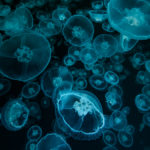
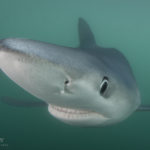
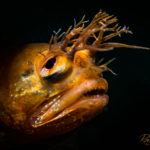
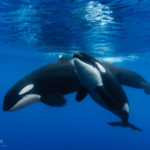
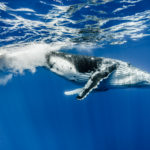
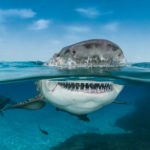
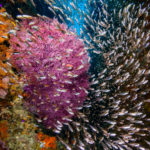
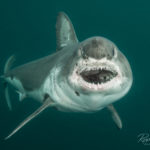
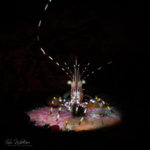
What got you interested in underwater photography?
As I mentioned before, my dad introduced me to diving and we shared that passion together for many years. When a medical issue forced him to stop diving, I got into underwater photography as a way for us to still have that bond. After my dive trips, I would show him the images and share stories about the diving, the trip and interesting people I met along the way. Even in his 80s, he still loves to reminisce about our early days diving together and his time in the Navy on the USS Oriskany. Every time we say goodbye, he always tells me to “have fun diving and be safe.”
What’s your favorite style of underwater photography?
That is very hard to say but lately I have been focused on mostly wide-angle, although I thoroughly enjoy all types of UW photography. I consider myself a bit of a jack-of-all-trades, which has really helped me in my UW photography workshops because I am able to teach basic and advanced techniques in macro, super macro, snooting, close-focus WA, split shots, ambient light, working with models, and other more creative techniques.
Any favorite subjects?
In recent years, I have been planning my trips around the larger animals like crocodiles, whales and especially sharks because they are under such pressure around the world from shark finning, commercial by-catch and shark fishing. A recent passion project of mine was to photograph salmon sharks in Alaska to learn more about them and increase awareness of their struggles. I first saw one in Southern California waters and it wasn’t until four years later that I was able to get my first pictures after multiple trips to Alaska.
Any favorite destinations?
My answer changes over time but usually it is one of the recent places I have been. I really learned to appreciate California diving while living there for five years (after I got a good wetsuit and drysuit to stay warm). California has great marine diversity, including sea lions, sharks, tons of nudibranchs, kelp forests, and jellyfish. Keeping with the cold-water theme, I also love diving in British Columbia, Canada at God’s Pocket and Alaska where in addition to the elusive salmon shark, there are huge blooms of jellyfish, giant plumose anemone gardens, critters galore and salmon in the streams.
For warmer water, it’s hard to beat the marine diversity and healthy reefs of the Coral Triangle. For big-animal photography, it is hard to beat the consistently crystal-clear waters of French Polynesia, which are teaming with sharks year-round. And how can I forget the marine-protected waters of the Gardens of the Queen in Cuba, where pristine Caribbean reefs look the way they were 60 years ago, teaming with sharks and American crocodiles. For local diving, the up-close-and-personal mako and blue sharks of Rhode Island make for an action-packed photography trip.
What’s your underwater setup?
I recently upgraded from a Nikon D800 full frame DSLR to the Nikon D850 and absolutely love the 3D-focus mode speed and accuracy, the dynamic range and quality of the images captured on that sensor. For wide-angle lenses, I use the Nikor 16-35mm and 8-5mm circular fisheye lenses and for macro, I use both the 105mm and 60mm Nikor lenses. The camera is housed in Nauticam with a large 9-inch Zen glass dome port. My rig also sports two fast powerful Sea & Sea YS250 strobes for wide-angle big-animal action. For macro I switch to my Sea & Sea D2J strobes with a Retra LSD snoot and OrcaTorch 900V focus/video light.
Do you have any tips for new underwater photographers?
Other than the obvious — hone your dive skills before ever touching a camera — here are my top three tips!
Take an underwater photography workshop. Why struggle, trip after trip, trying to teach yourself how to use your new equipment and troubleshoot why your pictures aren’t coming out the way you want them to? You spend a lot of money on the equipment, travel and precious time off from work, so why not spend a few more bucks to reduce your frustration levels and accelerate your learning curve?
Know your gear inside and out before you ever get in the water. It is not the camera that takes the picture—it’s you. Read your manual and learn all the camera’s options, then experiment with them. Look online for underwater reviews and tips for your model. This will pay dividends on your trip and significantly reduce your learning curve.
Finally, don’t take yourself or your photography too seriously. Obviously, you need to be serious about the learning process if you want to improve. But don’t judge the quality of the dive or trip by the pictures you get. Some photographers get to be real sour pusses if they don’t get “the shot” and especially if someone else does. Have fun diving, taking pictures and enjoying the beauty of the underwater world. Work on your underwater photography skills. With time, your consistency and quality of images will improve and you’ll be ready to capture that one in a million opportunity when it appears.
By guest author Ron Watkins
For more of Ron Watkins’ work, please visit his website here, Facebook, or Instagram.
The post Photographer Spotlight: Ron Watkins appeared first on Scuba Diver Life.
from Scuba Diver Life https://ift.tt/2NmbqzF
No comments:
Post a Comment